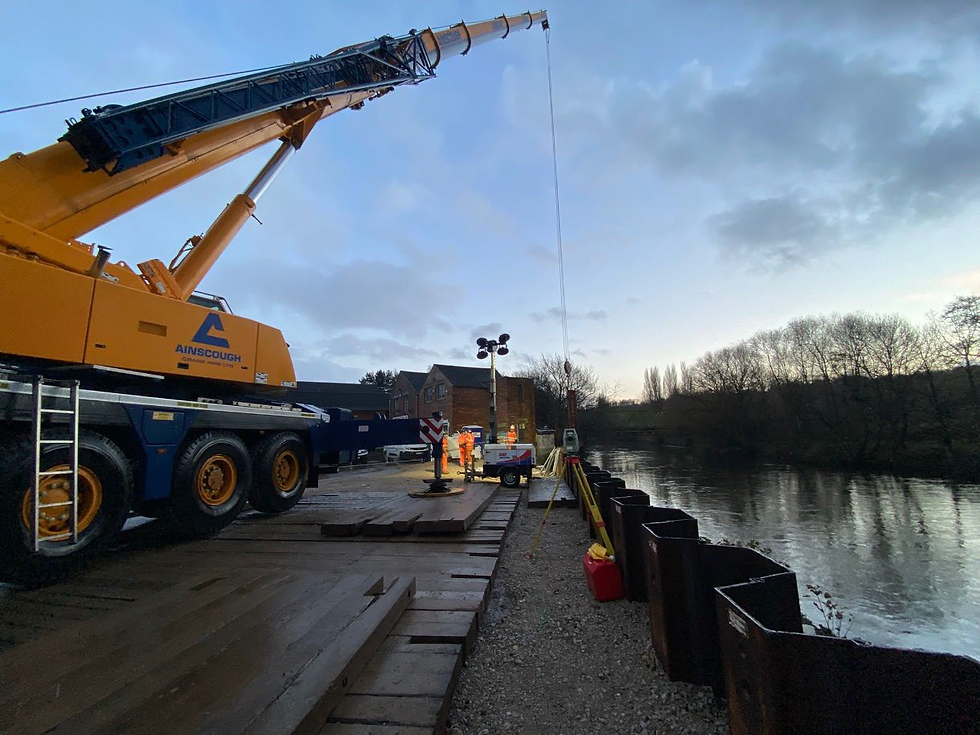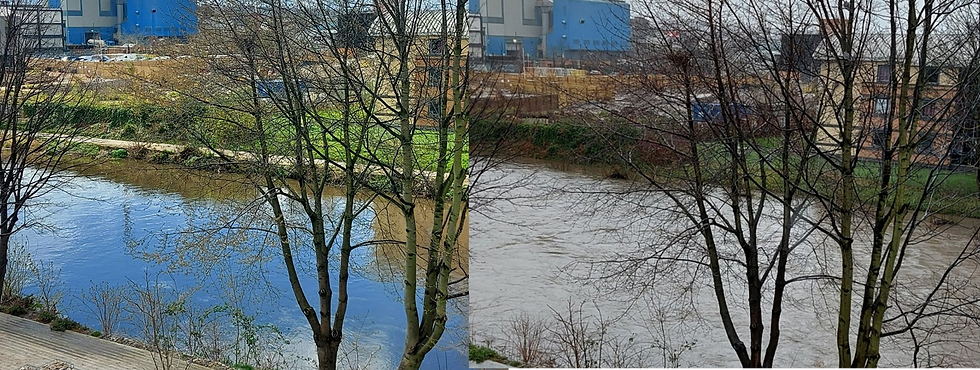The second phase of the Leeds Flood Alleviation Scheme begins
- Megan Smith

- Apr 12, 2022
- 2 min read
How is the government reducing the risk of flooding?

Starting at the end of March this year, phase two of the two-part flood alleviation scheme (FAS) commenced being built with its goal by the end of construction by 2023 to have prevented floods alongside the river Aire, upstream of Leeds Train Station and Apperley Bridge.
These floods will be reduced through using a combination of natural flood management like creating new woodland and traditional engineering that would see flood defence walls as well as new flood storage areas, this will create a new habitat for wildlife as well as reduce the impact of climate change.
Pamela Clucow, a resident of Leeds City Centre luckily does not experience the floods due to her home being built on raised land. However, this does not stop her from seeing what is caused by the floods as she explained what can be seen from her residence, she said:
“When the gates are lowered you can see the level of the water drop and the flow rate increase. We regularly lose site of the towpath on the opposite bank to us where the footpath to Leeds dock is.”
Although she believes that the flood prevention scheme will be an improvement for Leeds, she states that the defences does elevate the problems in some areas like near her house however she cannot speak for those that live downstream.
According to the Leeds Government site, FAS2 will provide a one in 200 year level of protection against flooding. This would mean that flooding in Leeds would be reduced to a 0.5% chance of occurring in any year.
However, Professor Howard Wheater from the Imperial College of London that specialises in Environmental and Water Resource Engineering, stated that the guidelines set out by the Environment Agency that specifies this probability of prevention are based on ‘historical data that is no longer a suitable guide for the future.’
He said: “The EA requires new designs to make an allowance for increased flood risk, but with increased severity of floods, many historical defences will be inadequate. There is some help to be had by managing upland headwater river systems, e.g., managing agricultural land more carefully, tree planting, and allowing floodplains to flood. However, in general, more investment in hard defences will be needed.”

The Leeds Government has acknowledged that the current preventions have got an allowance for climate change that will prevent further floods as well as the scheme also improving on currently built flood defences to make them more effective.
MP Hilary Benn commented on the recent completion of the first phase of the flood alleviation scheme as well as on the increased weather when he said: “The flood defence scheme in Leeds is vital for the future of the city. We saw on Boxing Day a few years ago what damage flooding in Leeds could do but since then Phase one has been completed…This is good news, but we will need to keep aware of changing patterns of rainfall in the years ahead.”
FAS has expected to help protect against similar flooding such as Storm Eva which hit Leeds on Boxing Day 2015 that was estimated to have cost £36.8 million in damages to homes and businesses, unfortunately, this will only be put to the test once the defences are fully built by 2023.




Comments